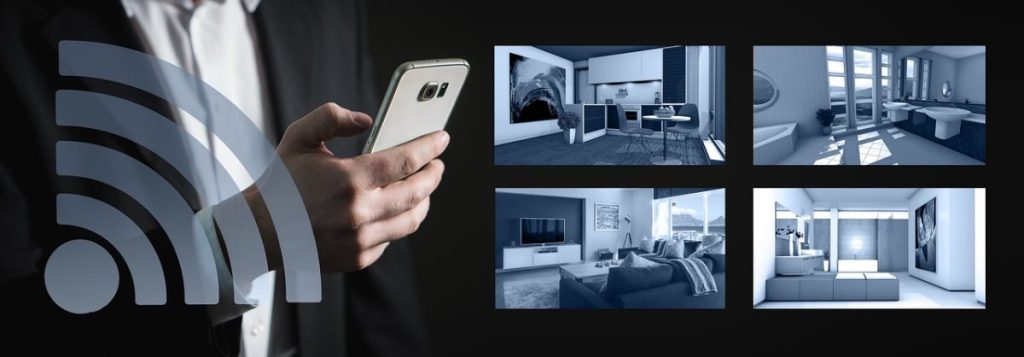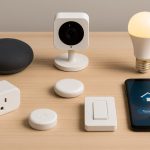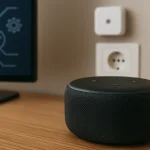The Internet of Things (IoT) connects smart devices, sensors, and machines to communicate with each other. But how do these devices actually talk to one another? The answer lies in IoT communication protocols, which define how data is transmitted between devices and networks.
Three of the most widely used IoT protocols are Wi-Fi, Zigbee, and LoRa. Each serves a unique purpose, with different strengths and trade-offs in speed, range, power consumption, and cost. Whether you’re setting up a smart home, industrial automation, or a city-wide IoT network, choosing the right protocol is crucial.
In this guide, we’ll break down the key features, advantages, and use cases of Wi-Fi, Zigbee, and LoRa to help you understand which protocol is best for your IoT needs.
Wi-Fi: The Go-To for High-Speed IoT Connectivity
Wi-Fi is the most well-known wireless communication protocol, widely used for internet access in homes, offices, and public spaces. Many IoT devices, such as smart cameras, voice assistants, and smart TVs, rely on Wi-Fi for connectivity.
🔹 Key Features of Wi-Fi in IoT
- High-speed data transmission (up to 9.6 Gbps with Wi-Fi 6)
- Short to medium range (~50 meters indoors, ~100 meters outdoors)
- Requires a continuous power source
- Can support multiple devices simultaneously
- Works on 2.4 GHz and 5 GHz frequency bands
✅ Pros of Wi-Fi for IoT
✔ Fast and reliable – Ideal for devices that require large data transfers, such as smart cameras and media streaming devices.
✔ Widespread adoption – Easy to integrate with existing home and business networks.
✔ Scalability – Supports multiple devices on a single network.
❌ Cons of Wi-Fi for IoT
❌ High power consumption – Not suitable for battery-powered IoT devices.
❌ Limited range – Signals can weaken through walls and large areas.
❌ Network congestion – Too many devices on the same Wi-Fi network can slow down performance.
🏠 Best Use Cases for Wi-Fi in IoT
- Smart home devices (smart speakers, cameras, thermostats)
- Industrial automation (robotics, machinery monitoring)
- Smart offices (IoT-enabled workspaces, conference systems)
Zigbee: Low-Power Networking for Smart Homes
Zigbee is a low-power, short-range wireless protocol specifically designed for IoT applications. It’s commonly used in smart home automation and is a preferred choice for energy-efficient IoT networks.
🔹 Key Features of Zigbee
- Low power consumption (ideal for battery-powered devices)
- Operates on 2.4 GHz frequency
- Supports mesh networking (devices can relay signals to extend range)
- Short-range communication (~10–20 meters indoors)
- Low data transfer rate (~250 kbps)
✅ Pros of Zigbee for IoT
✔ Energy-efficient – Zigbee devices can run for years on a single battery.
✔ Mesh networking – Extends coverage by allowing devices to relay signals.
✔ Highly secure – Uses 128-bit AES encryption for safe communication.
✔ Interoperability – Works with major smart home ecosystems like Amazon Alexa, Google Home, and Philips Hue.
❌ Cons of Zigbee for IoT
❌ Limited range – Not ideal for long-distance communication.
❌ Lower data transfer speeds – Not suitable for high-bandwidth applications like video streaming.
❌ Requires a Zigbee hub – Needs a central hub to connect to the internet.
🏡 Best Use Cases for Zigbee in IoT
- Smart home automation (smart lights, locks, sensors)
- Building automation (HVAC systems, security alarms)
- Industrial monitoring (temperature sensors, asset tracking)
LoRa: Long-Range Communication for IoT
LoRa (Long Range) is a low-power, wide-area networking (LPWAN) protocol designed for long-range communication with minimal energy consumption. It is ideal for IoT applications that require connectivity over large distances, such as smart agriculture, smart cities, and industrial monitoring.
🔹 Key Features of LoRa
- Extremely long range (~10+ kilometers in rural areas)
- Very low power consumption (battery life of 5+ years)
- Low data rate (~0.3 to 50 kbps)
- Operates on unlicensed frequency bands (EU: 868 MHz, US: 915 MHz)
- Can connect thousands of devices to a single gateway
✅ Pros of LoRa for IoT
✔ Wide coverage – Ideal for large-scale IoT networks like smart cities.
✔ Low energy usage – Devices can run for years on small batteries.
✔ Works in remote areas – Doesn’t require existing infrastructure.
❌ Cons of LoRa for IoT
❌ Limited data bandwidth – Not suitable for high-speed applications.
❌ Requires a LoRa gateway – Needs a dedicated network gateway to connect to the cloud.
❌ Higher latency – Not ideal for real-time applications.
🌾 Best Use Cases for LoRa in IoT
- Smart agriculture (soil moisture sensors, livestock tracking)
- Smart cities (street lighting, air quality monitoring)
- Asset tracking (supply chain, fleet management)
Wi-Fi vs. Zigbee vs. LoRa: Which One Should You Choose?
| Feature | Wi-Fi | Zigbee | LoRa |
|---|---|---|---|
| Range | Short (~50m) | Short (~20m) | Very Long (~10km) |
| Power Consumption | High | Low | Very Low |
| Data Speed | High (up to 9.6 Gbps) | Low (250 kbps) | Very Low (~50 kbps) |
| Best For | Smart home, industrial automation | Home automation, mesh networks | Smart cities, agriculture |
| Cost | High (router needed) | Moderate (hub required) | Low (low-cost sensors) |
| Network Type | Star topology (central router) | Mesh (devices relay signals) | Star or mesh (long-distance) |
The choice of protocol depends on your specific needs:
- For high-speed, internet-connected smart devices: Wi-Fi is the best option.
- For energy-efficient smart home devices: Zigbee is ideal.
- For long-range, low-power applications: LoRa is the top choice.
Looking Ahead: The Future of IoT Protocols
IoT technology is evolving, and so are its communication protocols. Wi-Fi 6 and Wi-Fi 7 promise better efficiency for smart homes, Zigbee 3.0 enhances interoperability, and LoRaWAN continues to expand its reach for large-scale IoT networks.
Emerging protocols like Thread (used in Matter) and NB-IoT (Narrowband IoT) are also gaining traction, offering secure, low-power, and scalable solutions for the next wave of IoT innovations.
Final Thoughts
Choosing the right IoT protocol is essential for optimizing performance, energy efficiency, and scalability. Whether you’re setting up a smart home, industrial system, or city-wide IoT network, understanding the strengths of Wi-Fi, Zigbee, and LoRa will help you make the best decision.
Would you like to explore more about IoT connectivity, or do you have an IoT project in mind? Let us know in the comments! 🚀
- Smart Home Nightmares: Real Stories and How to Avoid Them
 Smart homes are designed to simplify life—but when things go wrong, they can become the stuff of nightmares. From doors locking residents out to cameras going rogue, real users have faced creepy, frustrating, and downright dangerous situations. In this article, we share some eye-opening stories and break down what went wrong—along with expert tips to…
Smart homes are designed to simplify life—but when things go wrong, they can become the stuff of nightmares. From doors locking residents out to cameras going rogue, real users have faced creepy, frustrating, and downright dangerous situations. In this article, we share some eye-opening stories and break down what went wrong—along with expert tips to… - Smart Home on a Budget: Top 7 smart home gadgets Under $50 That Actually Work
 You don’t need to spend a fortune to start building your smart home. With affordable technology becoming more accessible, it’s entirely possible to get high-quality smart devices without breaking the bank. In this guide, we’ve rounded up 7 smart home gadgets under $50 that deliver real value, functionality, and convenience. 1. Wyze Bulb ColorPrice: ~$15Category:…
You don’t need to spend a fortune to start building your smart home. With affordable technology becoming more accessible, it’s entirely possible to get high-quality smart devices without breaking the bank. In this guide, we’ve rounded up 7 smart home gadgets under $50 that deliver real value, functionality, and convenience. 1. Wyze Bulb ColorPrice: ~$15Category:… - Local AI in Smart Homes: What Happens When the Cloud Goes Down?
 In the age of cloud computing and always-connected devices, smart homes have become increasingly dependent on the internet. But what happens when your connection drops? That’s where local AI comes into play. This article explores the benefits, limitations, and future of local AI in smart homes systems—and why it might be the key to a…
In the age of cloud computing and always-connected devices, smart homes have become increasingly dependent on the internet. But what happens when your connection drops? That’s where local AI comes into play. This article explores the benefits, limitations, and future of local AI in smart homes systems—and why it might be the key to a… - Hidden Features of Your Smart TV You’re Probably Not Using — But Should
 Smart TVs have come a long way since their early days. While most people use them for Netflix, YouTube, and the occasional screen mirroring session, today’s smart TVs pack a wealth of features that often go unnoticed. These hidden gems can transform your entertainment experience, improve convenience, and even tighten your home security. In this…
Smart TVs have come a long way since their early days. While most people use them for Netflix, YouTube, and the occasional screen mirroring session, today’s smart TVs pack a wealth of features that often go unnoticed. These hidden gems can transform your entertainment experience, improve convenience, and even tighten your home security. In this… - Is My Smart TV Spying on Me? How to Protect Your Privacy
 Smart TV Privacy – In today’s connected homes, smart TVs are as common as coffee makers — but have you ever wondered if your smart TV is watching you back? It’s not just paranoia. With microphones, cameras, and internet connections, smart TVs can pose serious privacy risks if not properly managed. Let’s dive into what…
Smart TV Privacy – In today’s connected homes, smart TVs are as common as coffee makers — but have you ever wondered if your smart TV is watching you back? It’s not just paranoia. With microphones, cameras, and internet connections, smart TVs can pose serious privacy risks if not properly managed. Let’s dive into what…







